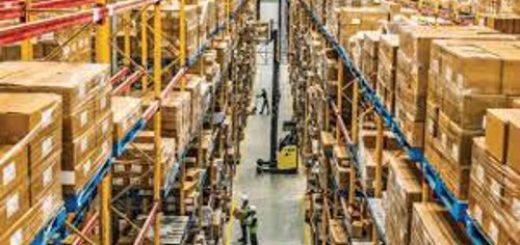India’s Road Transport Sector Poised to Maintain Dominance in Freight Movement, Outpacing Railways
India’s logistics industry, valued at a staggering USD 250 billion and growing at a steady 6-7% annual rate, is on the cusp of transformation. However, despite the government’s ambitious target to increase the share of freight transported by rail to 45% by 2031, road transport is expected to maintain its dominance, with a projected 64% share by 2030. According to S&P Global Mobility, the railways will likely only achieve a 24% share by 2030, falling short of the target.
The reasons for road transport’s continued dominance are multifaceted. Road freight offers unparalleled advantages, including serving both last-mile and long-haul needs, saving on packing costs, facilitating tracking, and ensuring timely deliveries. These benefits resonate across a diverse range of sectors, making road transport an attractive option for businesses. Furthermore, India’s rapid expansion of road infrastructure, including national highways, state roads, and local thoroughfares, has created a conducive environment for smooth freight movements. 
In contrast, the railways face significant challenges in increasing their share. They require different types of wagons, dedicated railway tracks, a large number of locomotives, bridges, and increased speeds, making it an uphill battle. The Indian government’s substantial infrastructure investments, including a Rs 11,11,111 crore allocation for capital expenditure, are expected to fuel key infrastructure sectors, including roads, railways, airports, ports, and power plants. However, the focus on road infrastructure development is likely to further cement road transport’s dominance.
The government’s measures to spur state-level infrastructure spending, including Rs 1.5 lakh crore in long-term, interest-free loans, and plans to enhance private sector investment through viability gap funding and market-based financing networks, are expected to create opportunities for private sector involvement in large-scale projects. The expansion of the Pradhan Mantri Gram Sadak Yojana (PMGSY) to connect 25,000 rural habitations with all-weather roads will also contribute to the growth of road transport.
Also Read:- Ashok Leyland Aims to Sell 500 Electric and LNG Trucks in 2024, Eyes Growing Demand for Greener Vehicles
The trucking and bus market is expected to witness promising growth, with S&P Mobility forecasting that trucks and buses over six tons will grow from 480,000 units in 2024 to 500,000 by 2026. The heavy-duty truck segment is poised to expand at a robust CAGR of 10.3% during FY 2021-2026, while medium trucks are expected to grow by 9.1%. The bus segment is set to soar, with a remarkable 39.7% CAGR, driven by macroeconomic factors such as overall economic growth, the infrastructure push, and the rise of e-commerce.
While the Indian government’s efforts to increase the share of freight transported by rail are commendable, the road transport sector is poised to maintain its dominance in the freight movement market. The growth of road infrastructure, the advantages of road freight, and the government’s investment in the sector are expected to drive the growth of the trucking and bus market, carving out new pathways for the country’s booming logistics sector.
Reference By:- https://www.autocarpro.in/




Recent Comments